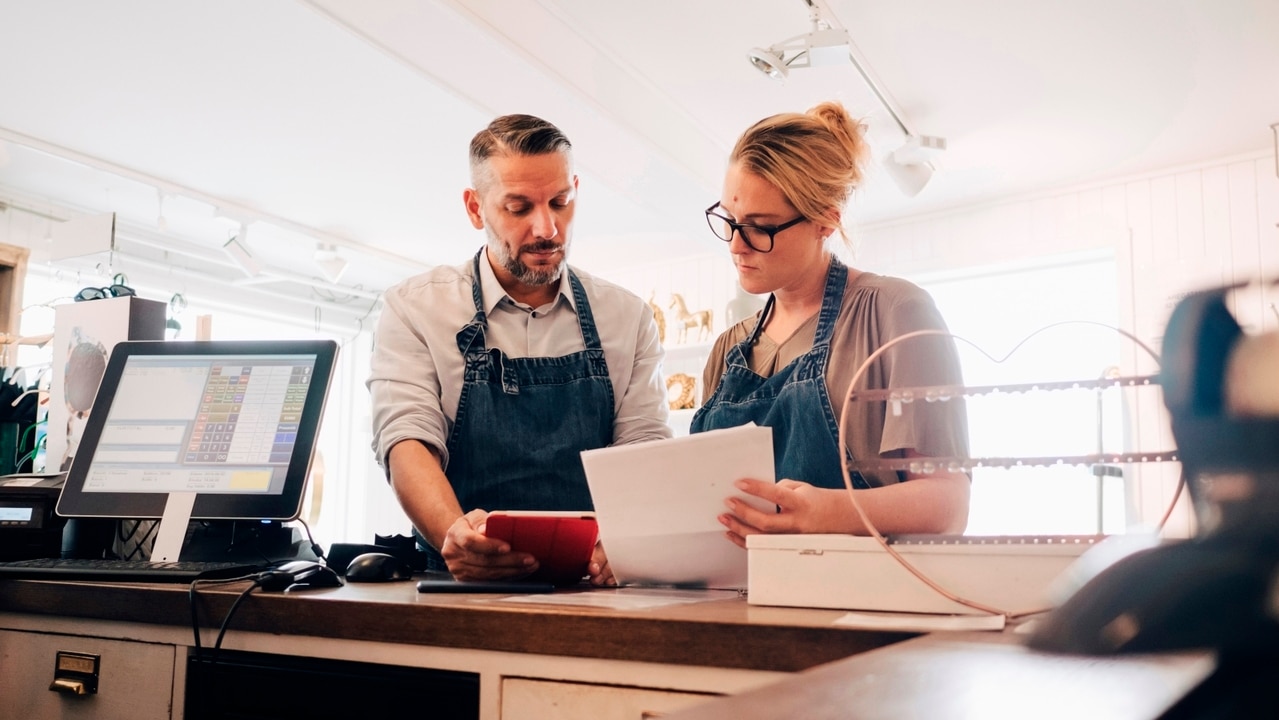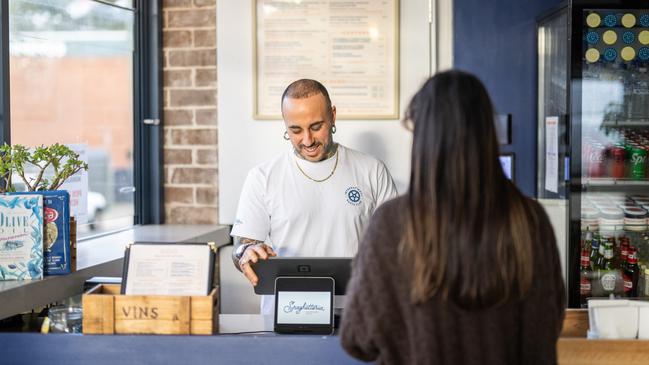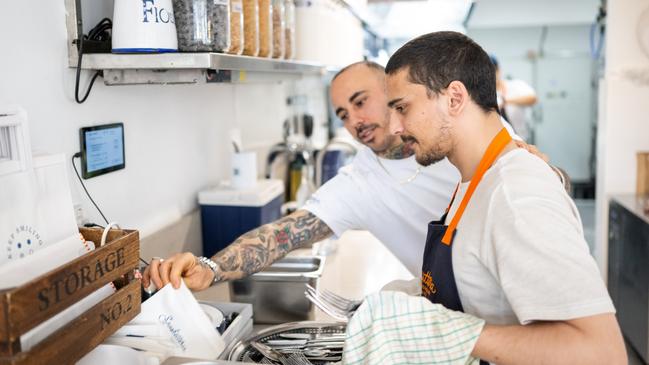Online delivery services helping restaurants stay open in tough economic times
The restaurant sector has been one of the hardest hit in recent times, but a new report has found fresh optimism for the industry as online delivery services help businesses stay afloat.

Eat
Don't miss out on the headlines from Eat. Followed categories will be added to My News.
The restaurant sector has been one of the hardest hit by the current economic crisis, with skyrocketing costs and less consumer spending causing restaurants to go bust faster than any other industry in Australia.
According to the Australian Securities and Investments Commission, accommodation and food businesses have experienced the fastest-rising insolvency rates in the nation.
Huge spikes in operational costs and less consumer spending have seen restaurant owners make far less margin than before, with four in 10 eateries reporting they were in a more difficult financial position than a year ago.
But a new report has found fresh optimism for the sector, as food delivery services create an additional revenue stream for restaurants that have been struggling to stay afloat.

Nearly half of restaurant owners think they will be in a less difficult financial position in the next 12 months, as online food delivery services help them diversify their revenue streams.
According to The Pulse Check: Restaurant Report 2024, 25 per cent of restaurant owners reported that revenue from food delivery services has helped their business stay open.
The report uses data from the Restaurant and Catering Association, MasterCard and Uber Eats, providing insights into 60,000 small businesses and 300,000 people working in the sector.
Almost all businesses that took part in the survey said that food delivery platforms have increased their revenue in the past 12 months, with 42 per cent saying it increased their revenue between 21 to 40 per cent.
Another 27 per cent of business reported online deliveries represent between 41 and 60 per cent of their business.

Almost half the restaurants that used food delivery services believe they will be less financially stressed in the next year, compared to 35 per cent that do not offer the service.
Spaghetteria owner Stefano Sepe opened his Randwick restaurant in 2021. Over the past 12 months, he has noticed the impact of rising costs and honed in on operational efficiencies to reduce expenditure.
One way he did this was through online food delivery services, which account for about 40 per cent of his business.
“We’ve built a strong and loyal following around the love for pasta with many locals who are passionate about our food,” he said.
“Their support has been key to our success, so we want to support them too, whether they want to dine in or order their favourite pasta to be delivered midweek.”
Uber Eats ANZ general manager Ed Kitchen said the long tail impact of the Covid-19 pandemic has continued to ripple through the economy and now appeared in the form of higher rents, insurance premiums, utility and wage bills, and more expensive ingredients.
“While the main pain-points differ between states and territories, there is one shared thread – cautious optimism,” he said.
“This is likely fuelled by the solutions restaurant owners are unearthing to provide additional revenue to offset their increasing operating costs.

“Pleasingly, one consistently identified growth lever was online food delivery – which is seeing double-digit growth in transaction volume across the country – providing incremental revenue with near zero capital investment.”
Restaurant and Catering Association chief executive Suresh Manickam said that during the past year, Australia’s restaurant, cafe, and catering sectors had experienced an unprecedented fusion of a number of factors which have created one of the most challenging economic landscapes in recent history.
Mr Manickam said high interest rates, industrial relations pressures, fewer apprentices, and high energy prices had made it hard for the sector to operate.
“In contrast there are some beneficial outcomes that have arisen over the past year. Firstly, there has been an uptake in online food delivery,” he said.
“Secondly, the catering sector has experienced an uptick in terms of activity, which pleasingly suggests a return to various types of catering. Given the challenges that the sector faces, the Restaurant and Catering Association has been consistent in our request from government.”

Mr Manickam said the government needs to invest in skills and provide an ongoing sustainable subsidy to offset energy prices.
“Both of these initiatives will continue to assist a sector facing challenging circumstances,” he said.
MasterCard chief economist Asia Pacific David Mann said the latest report demonstrated a shift in consumer preferences.
He said the move was driven by cost-of-living challenges and post-pandemic shifts.
“Although consumers appear to be cutting back on some discretionary spending, we continue to see them prioritising funds for things they are passionate about,” he said. “Australia’s passion for food has allowed the restaurant industry to continue to grow, but with a shift towards online delivery as Aussies embrace the thriving food culture in a different way.”
Originally published as Online delivery services helping restaurants stay open in tough economic times


